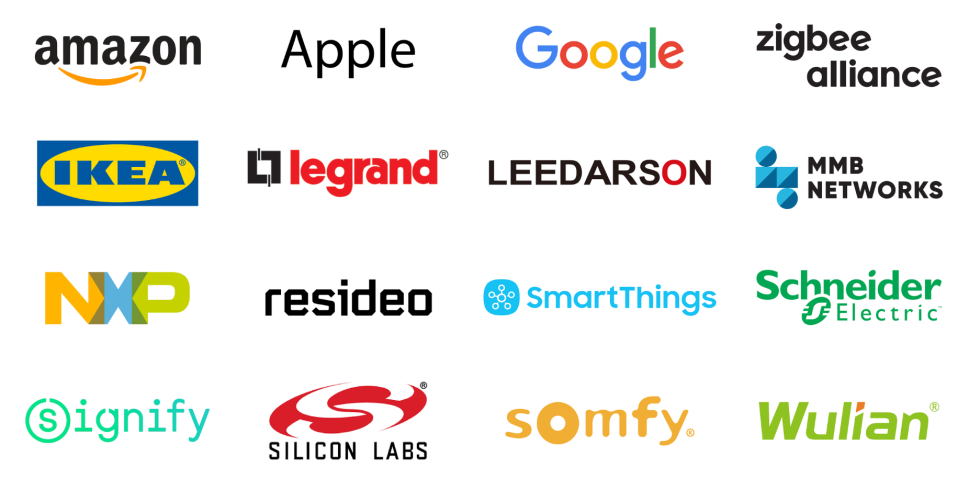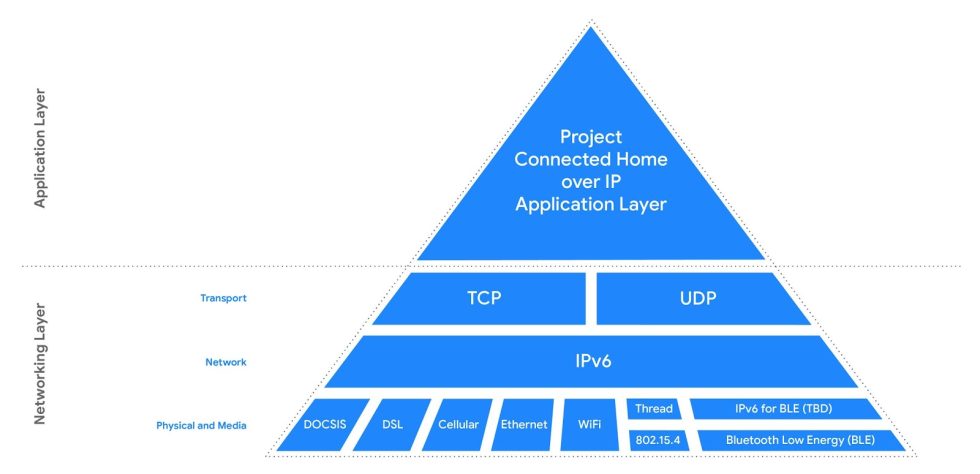
Apple, Google, Amazon, and the Zigbee Alliance have all teamed up to make a new smart home standard. The new working group went live today under the name of "Project Connected Home over IP" with announcement blog posts from Google, Apple, Zigbee, and a new website, connectedhomeip.com. The name doesn't sound too catchy until you realize "Connected Home over IP" abbreviates to "CHIP" which, across all these blog posts, is quietly used only a single time in the official FAQ.
According to the new website, "The goal of the Connected Home over IP project is to simplify development for manufacturers and increase compatibility for consumers." But thanks to XKCD, we all know that one new standard to "unite them all" often just results in making one additional standard available, but assuming the companies involved actually support their own standard, this could—maybe—make things easier for consumers.
Currently, Apple's smart home ecosystem is HomeKit, and it works over IP (usually Wi-Fi) and Bluetooth LE. Amazon has the "Works with Alexa" program, and while Echos can handle IP connections, the smart home focused models also have Zigbee (an IEEE 802.15.4-based low-power, low-data-rate mesh network) built into them. Google being Google means it has several overlapping and competing smart home ecosystems at various stages of adoption. The company is working on shutting down the "Works with Nest" ecosystem in favor of the "Works with Google Assistant" ecosystem, which is IP-based. Google's Nest division has also cooked up the "Thread" network protocol, which, just like Zigbee, is an IEEE 802.15.4-based low-power, low-data-rate mesh network. While Thread can be radio compatible with Zigbee's ~900MHz or 2.45Ghz signal, Thread adds the ability to be wrapped in an IP packet and travel over Wi-Fi or the Internet. Nest also has the "Weave" communication standard, which defines how to send a message like "turn on the light" over the Thread or Wi-Fi network.
In addition to Apple, Google, Amazon, and Zigbee, the site says that "Zigbee Alliance board-member companies IKEA, Legrand, NXP Semiconductors, Resideo, Samsung SmartThings, Schneider Electric, Signify (formerly Philips Lighting), Silicon Labs, Somfy, and Wulian are also on board to join the Working Group and contribute to the project."

It's impossible to know how truly committed each company is to Project CHIP at this stage, but the promised goal of building devices that are "compatible with smart home and voice services such as Amazon's Alexa, Apple's Siri, Google's Assistant, and others" sounds great. Compatibility with the major voice-command systems is a primary concern for any new smart home product, and being able to tackle the big three with a single standard sounds a lot easier than implementing three separate APIs.
Project CHIP is open source. The site says "The reference implementation of the new standard, and its supporting tooling, will be developed and maintained on the GitHub open source platform for all aspects of the specification. Please stay tuned for more information." The website also says the new standard will be "royalty-free," which is not currently the case for Zigbee or Apple's HomeKit.
IP-based
As the name suggests, the new standard will be IP-based, and it "aims to enable communication across smart home devices, mobile apps, and cloud services and to define a specific set of IP-based networking technologies for device certification." The site says the project aims to build "a new, unified connectivity protocol" that will "use contributions from market-tested smart home technologies from Amazon, Apple, Google, Zigbee Alliance, and others."
It sounds like, for starters, there will be three main network standards supported by the new project. "The goal of the first specification release will be Wi-Fi, up to and including 802.11ax (aka Wi-Fi 6)... Thread over 802.15.4-2006 at 2.4 GHz; and IP implementations for Bluetooth Low Energy, versions 4.1, 4.2, and 5.0 for the network and physical wireless protocols."
No single network protocol is right for all devices and use cases. Wi-Fi is fast but power-hungry, which is great for plugged-in devices. Thread (or Zigbee) is slow, but it's ultra-low power, allowing a single coin battery to power something like a door sensor for months thanks to the low power usage. The working group says, "We expect that compliant devices must implement at least one supported technology and not necessarily all." So accessory manufacturers will just pick the most appropriate technology, while a hub would support all three.
The FAQ on the new site says the working group won't unify smart home user interfaces "such as voice assistants, smart displays, or desktop and mobile apps." That means Google, Amazon, and Apple will be free to compete in those areas—they'll just be competing with an even playing field of device support. The CHIP working group has "a goal to release a draft specification and a preliminary reference open source implementation in late 2020."
Update, 12/19: There have been a few new developments since yesterday's announcement that Apple, Google, Amazon, and Zigbee have come together to create an initial smart home standard. First, Apple has open sourced "portions" of the HomeKit Accessory Development Kit (ADK), allowing developers to prototype non-commercial smart home accessories (commercial devices still needing a license). In a blog post, Apple says it open sourced the HomeKit ADK "to accelerate the development of the new universal standard" that it is developing with the Connected Home over IP working group. CHIP has been pitched as combining the best from Apple, Amazon, Google, and Zigbee, so presumably bits of this HomeKit ADK will be used in the new CHIP standard.
The second development is that Google has a second blog post on CHIP with some more details. Google talked a bit about security, saying that by leveraging the tried-and-true Internet protocol (IP) CHIP will enable "direct, private and secure end-to-end communications among devices, mobiles, and cloud services with a familiar and consistent development and programming model making it easier for developers to leverage their experience and solutions across those domains. This approach reduces points of attack and weakness where security would otherwise be terminated and reinitiated."

Google shared this fun pyramid diagram of CHIP's conceptual model. The network will only use IPv6, according to this diagram, and IPv4 is not supported. Once you get IP up and running, CHIP communication can happen over pretty much anything, with Google listing basically every popular networking technology at the bottom. Google argues that "IP-based solutions can leverage off-the-shelf network infrastructure that can be shared across many applications and products. This helps reduce the mess of wires and pucks spawned by gateways and hubs common in many smart home solutions today."
Like we alluded to below, Google sees the three main home networks supported by CHIP as each having a specific strength. Wi-Fi is fast, and is the "path to mobiles, the Internet, and cloud services." Thread is here for efficiency, as the 802.15.4-based network is ultra low power and allows sensors to run for months on a battery. Bluetooth Low Energy is here for "convenience" since phones nearly universally support BTLE. It doesn't sound like Bluetooth will be doing a lot of heavy lifting, with Google saying it will provide "an easy way to connect and set devices up" and "serve as a direct-to-mobile proximity link."
reader comments
183